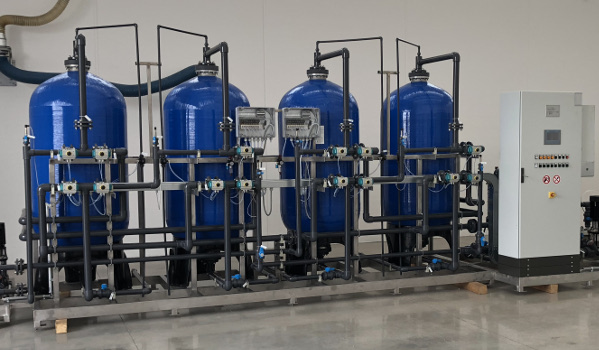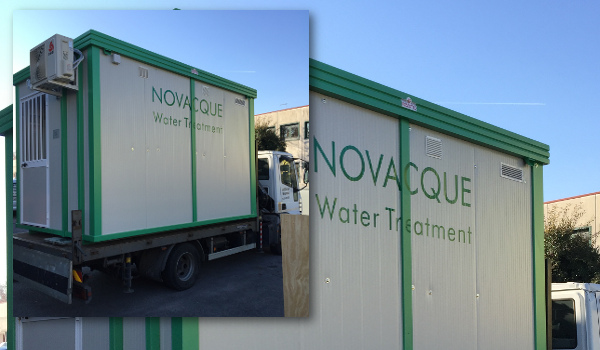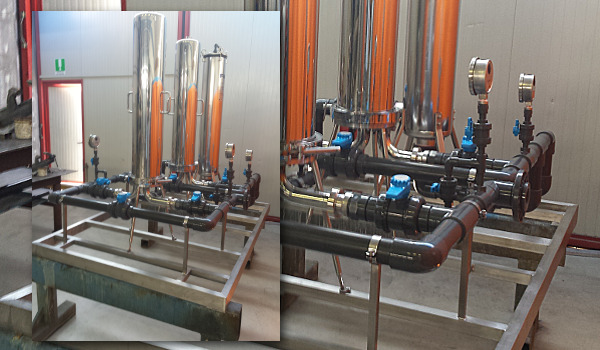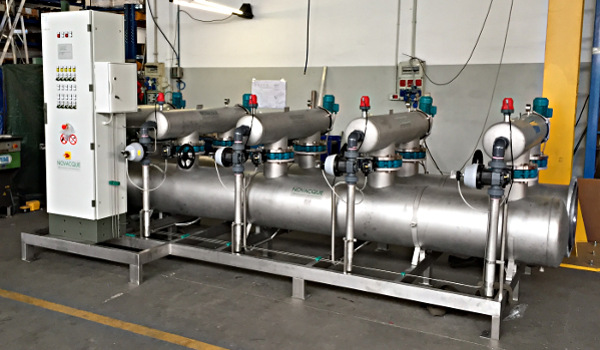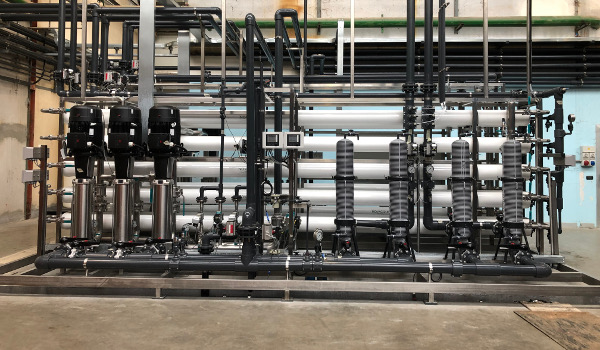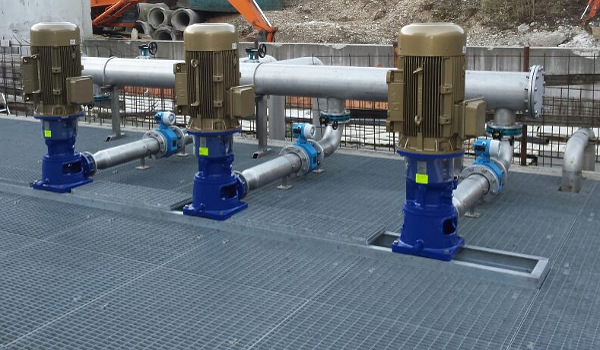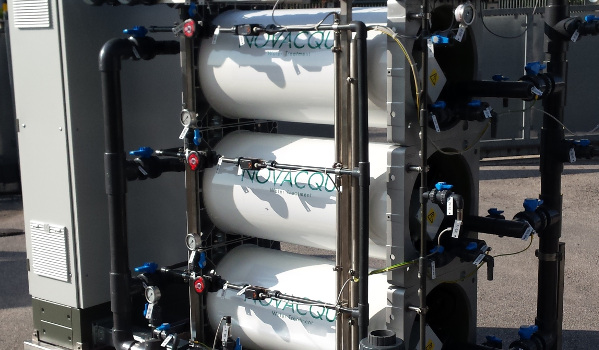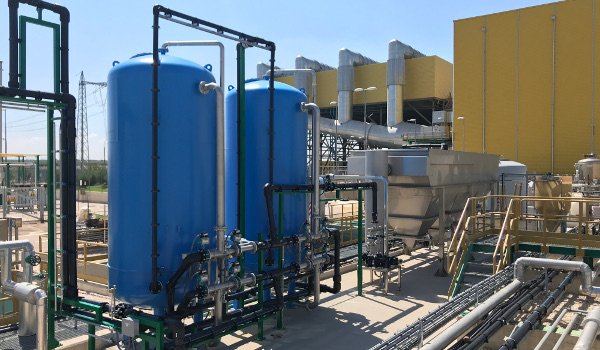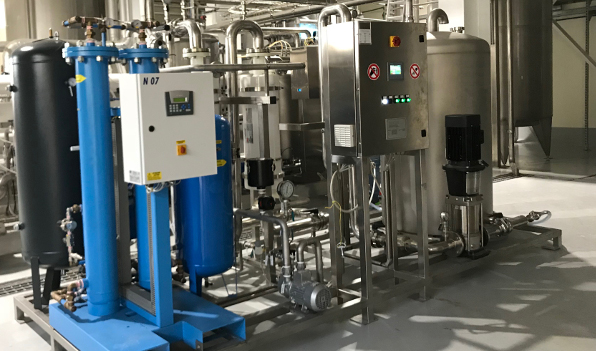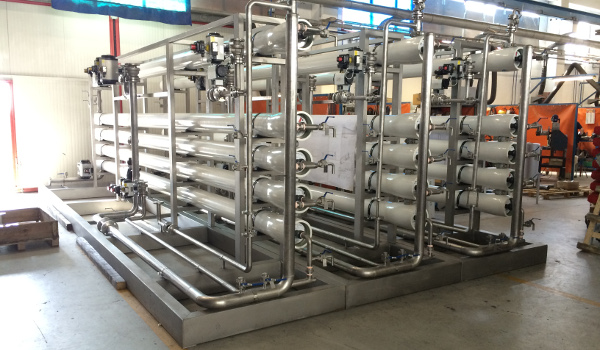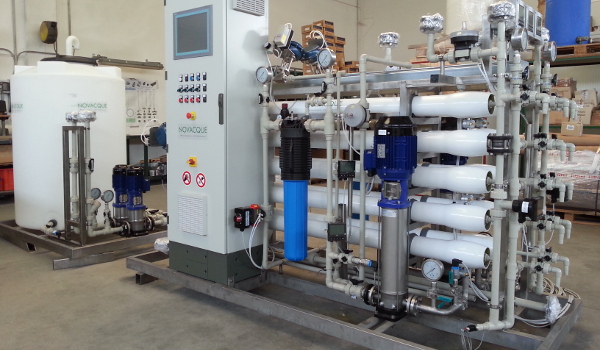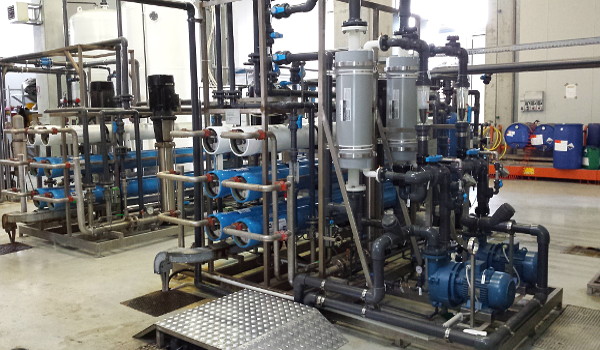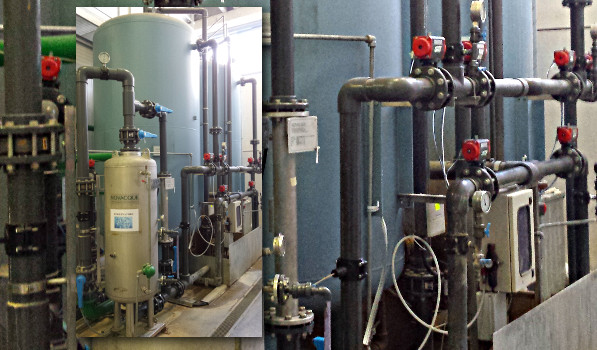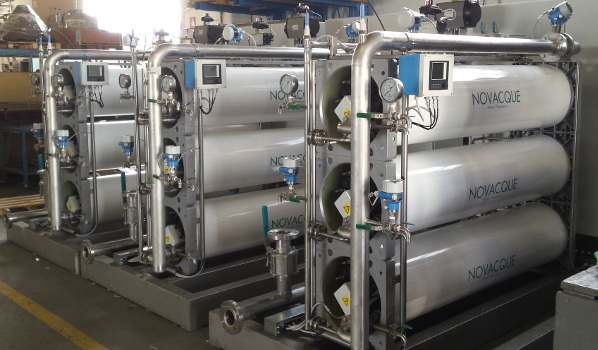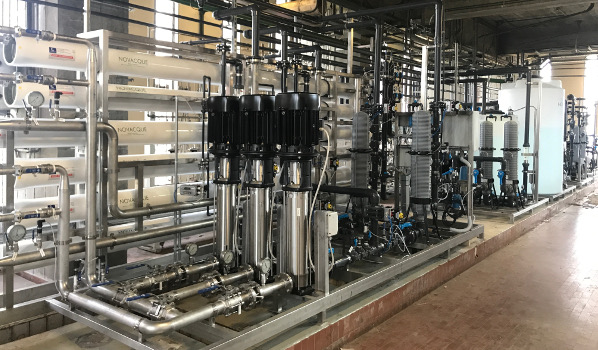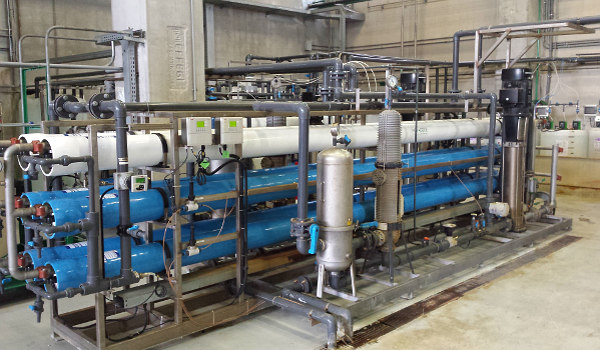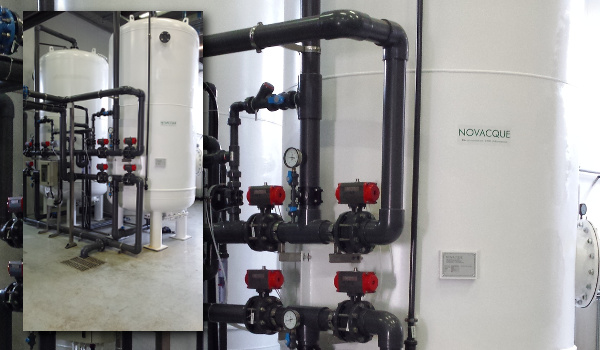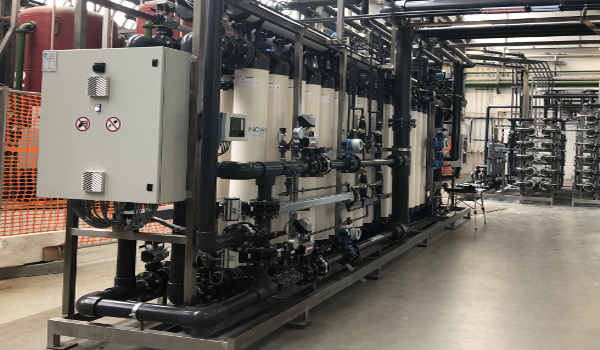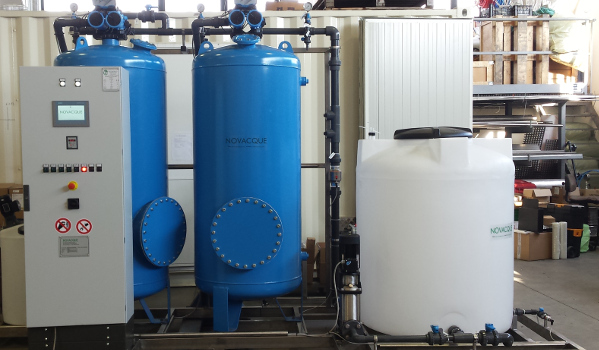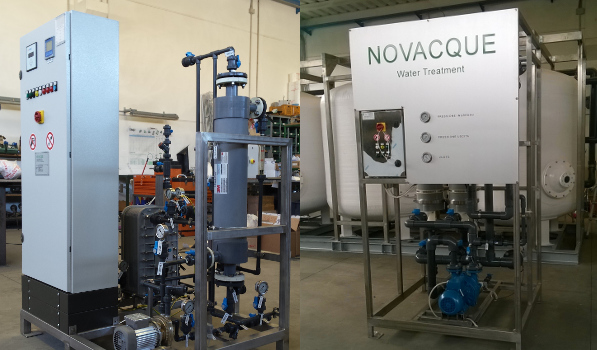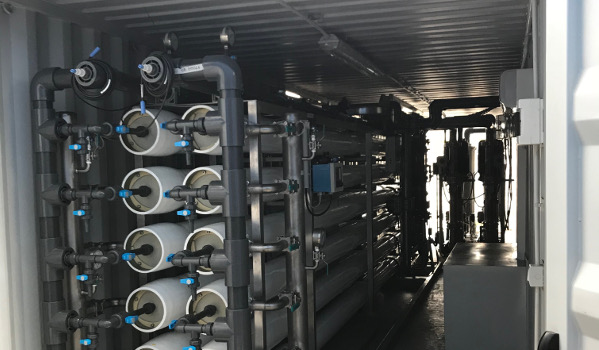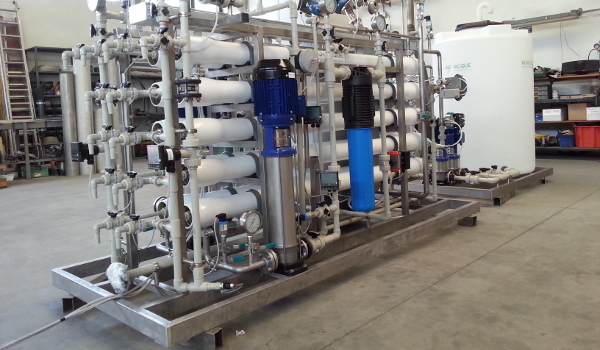Softening using ion exchange resins enables to hold Calcium and Magnesium salt (that determine the hardness of water) with the release in water of Sodium Salts in substitution.
Resin softening does not substantially modify the saline content but the saline composition.
The hardness of water is responsible for the formation of encrustation on piping or on the equipment crossed by the water (heat exchangers, boilers, cooling towers etc.).
The IS softeners work independently. The regeneration is allowed by a turbine calibrated for a specific cyclic capacity according to the hardness of the water to be treated and to other parameters or, if requested, by a timer.
When the resin can no longer exchange Sodium salts with Calcium salts, it means that its exchange capacity runs out. The resin is regenerated by an unsaturated solution (brine) of sodium chloride. Depending on the regeneration level provided for (grams of NaCl for each litre of resin) the resin has different exchange capacities: higher is the regeneration level, higher will be the exchange capacity. But the increase of the exchange capacity isn’t directly proportional to the increase of the chosen regenerative level.
The ISD softeners work pairs (Duplex) with exchange operation, while one softener is working the other one is being regenerated or is on standby. They are kinds of equipment that guarantee reliability, safety, duration and most importantly their simplicity and proven application.
NOTE: Sometimes it may be best to carry out softening using the reverse osmosis process.
Uses
- Water softening
- Softening of well water
- In industrial fields (laundries, supply to steam generators, supply to cooling towers etc)
- In civil fields (conditioning, powering of large condominium boilers supply)
- In hospital fields (power to the thermal power station supply etc.)

